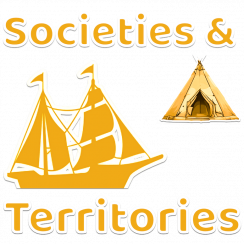In 1775 Lord John Dunsmore, Royal Governor of Virginia, offered freedom to rebel-owned slaves who joined the Army. Four years later this invitation was extended to all slaves of rebels, and hundreds of Black slaves fled behind British lines to freedom. Black Loyalists numbered about 3000, many of whom migrated to Nova Scotia after their service in the army. They found, however, that the promises made to them during the war were not honoured.
The British promised to treat Black and White Loyalists the same way, but Blacks received less land of poorer quality. They did not receive the same provisions for as long, and having come from slavery had fewer possessions than Whites, and so began their new lives in poverty. The government of New Brunswick imposed restrictions on Blacks, forcing them to form Companies to develop land and increasing their allotment only when they proved they could develop it. No such restrictions were made on White settlers. Unable to farm the land in these conditions, some Black settlers moved near towns in the hopes of finding work as labourers and servants, but even this attracted the anger of Whites and race riots broke out in the Maritimes. Although free, Blacks found that their activities could be limited by city charters, such as the charter of Saint John which required Blacks to have special licenses to reside in the town and engage in tradeTrade is when we buy, sell, or just exchange goods (things, foods, etc.) or services (helping or doing work for someone). More or business.
Disenchanted with the treatment they received, 1 196 free Black loyalists decided to resettle in Sierra Leone and left Halifax in January of 1792. Given free passage to Africa by the Sierra Leone Company they chose to move to a British colony which would be governed by Blacks and in which there would be no slavery.
Some Loyalists brought slaves with them when they moved north, and many settlements in Upper and Lower Canada had slaves. According to historical documents only a few dozen free Black Loyalists settled between Cornwall and Windsor. Many Black people who came to Upper and Lower Canada fought in the war alongside their masters but then came north as slaves, not granted land for their loyalty to the British crown.
At least one free Black settler was captured and returned to slavery in the United States, prompting the government of Upper Canada to introduce a law freeing slaves in 1793. Although the law was modified due to the objections of slave owners, a law was passed stating that no more slaves could be brought into Upper Canada and children of slaves were to be freed when they reached the age of 25. Although slavery continued for some time, Upper Canada was the first British Territory to legislate against slavery.


